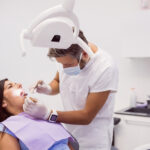Monitoring Progress: Follicular Unit Extraction Recovery Time Management
For many people, experiencing hair loss can be upsetting and negatively affect their confidence and sense of self. Fortunately, advancements in medical technology have provided effective solutions, one of which is Follicular Unit Extraction Recovery Time. This minimally invasive procedure offers natural-looking results by transplanting individual hair follicles from a donor area to the recipient site. However, understanding and managing the recovery process are crucial for successful outcomes.
Introduction to Follicular Unit Extraction Recovery Time Management
Follicular Unit Extraction is a popular hair restoration technique that involves extracting individual follicular units from the donor area, typically the back or sides of the scalp, and implanting them into the balding or thinning areas. Unlike traditional hair transplant methods, FUE leaves no linear scar, making it an attractive option for many patients.
Understanding the Recovery Process
Initial Recovery Period
Immediately after the FUE procedure, patients may experience some discomfort, swelling, and minor bleeding at the donor and recipient sites. This is a natural response of the body to the trauma experienced during the surgery. It’s essential to follow post-operative instructions provided by the surgeon to minimize these effects.
Intermediate Recovery Stage
During the following weeks, the transplanted hair follicles enter a resting phase before new growth begins. Some shedding of the transplanted hair may occur, which is a normal part of the process. Patients should avoid exposing the scalp to direct sunlight and refrain from strenuous activities that could disrupt the healing process.
Long-term Recovery and Final Results
Over the next several months, patients will notice gradual hair growth in the treated areas. The transplanted hair will continue to thicken and blend seamlessly with the existing hair, resulting in a natural-looking appearance. Final results typically become apparent within 12 to 18 months post-surgery.
Factors Affecting Follicular Unit Extraction Recovery Time
Several factors can influence the speed and success of the recovery process:
Individual Healing Capacity
Each person’s body responds differently to surgical procedures. Factors such as age, overall health, and genetic predisposition can impact the rate at which the body heals.
Size and Complexity of Procedure
The extent of hair loss and the number of grafts required can affect the duration of recovery. Larger procedures may necessitate more time for healing and hair growth.
Post-Operative Care
Following the surgeon’s post-operative care instructions diligently is crucial for optimal results. This include treating wounds appropriately, abstaining from specific behaviors, and using prescription drugs.
Managing Follicular Unit Extraction Recovery Time Efficiently
Efficient management of recovery time is essential for a smooth and successful outcome:
Follow Surgeon’s Instructions
Adhering to the post-operative care guidelines provided by the surgeon is paramount. This includes taking prescribed medications, avoiding strenuous activities, and attending follow-up appointments.
Maintain a Healthy Lifestyle
Eating a balanced diet, staying hydrated, and getting adequate rest can support the body’s healing process. Nutrient-rich foods promote hair growth and overall well-being.
Avoid Stress and Physical Strain
Stress and physical strain can impede the body’s ability to heal. Engaging in relaxation techniques such as meditation, yoga, or deep breathing exercises can help reduce stress levels during the recovery period.
Monitoring Progress During Recovery
Regular monitoring of progress is essential for identifying any issues early on and ensuring a successful outcome:
Regular Check-ups with Surgeon
Scheduled follow-up appointments with the surgeon allow for the assessment of healing progress and the detection of any potential complications. It’s essential to attend these appointments as scheduled.
Observing Hair Growth
Patients can monitor hair growth in the treated areas to gauge the success of the procedure. Initial growth may be sparse, but over time, the transplanted hair will thicken and become more noticeable.
Assessing Scalp Condition
Keeping an eye on the scalp’s condition, including any redness, swelling, or irritation, can help identify signs of infection or other complications. Contact the surgeon if any concerns arise.
Tips for Faster Recovery
In addition to following post-operative care instructions, certain lifestyle habits can promote faster healing:
Proper Nutrition and Hydration
Consuming a diet rich in vitamins, minerals, and protein supports the body’s healing process. Adequate hydration is also essential for maintaining overall health and promoting hair growth.
Avoiding Smoking and Alcohol
Smoking and excessive alcohol consumption can impair circulation and hinder the body’s ability to heal.
Gentle Hair Care Routine
During the initial stages of recovery, it’s important to handle the scalp and hair with care to avoid dislodging or damaging the transplanted follicles. Use gentle shampoos and avoid vigorous scrubbing or brushing.
Patience and Realistic Expectations
Recovering from Follicular Unit Extraction takes time, and patience is key. It’s essential to have realistic expectations regarding the timeline and results of the procedure. Remember that final results may take several months to become apparent.
Conclusion
Managing Follicular Unit Extraction recovery time is crucial for achieving the desired results. By understanding the process, following post-operative care instructions diligently, and monitoring progress regularly, patients can enjoy natural-looking hair restoration with minimal downtime.
FAQs
How long does it take to recover from Follicular Unit Extraction?
Recovery time varies depending on individual factors and the extent of the procedure. Generally, patients can expect to see initial results within a few weeks, with final results becoming apparent within 12 to 18 months.
Is there anything I can do to speed up the recovery process?
Following post-operative care instructions, maintaining a healthy lifestyle, and avoiding stress and physical strain can support faster healing.
Will I experience any pain or discomfort during the recovery period?
Some discomfort and swelling are normal immediately following the procedure, but these symptoms typically subside within a few days. Pain can be managed with prescribed medications.
When can I resume normal activities after Follicular Unit Extraction?
Patients can usually resume light activities within a few days after the procedure, but strenuous exercise should be avoided for several weeks to allow for proper healing.
Are there any risks or complications associated with Follicular Unit Extraction?
While complications are rare, as with any surgical procedure, there are risks such as infection, bleeding, or scarring. However, these can be minimized by choosing a qualified and experienced surgeon and following post-operative care instructions diligently.











